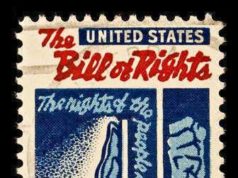
Introduction
The English Bill of Rights and the United States Bill of Rights are two of the most important documents in the history of democratic government. These documents outline the fundamental rights and freedoms of citizens, and have served as models for democratic governments around the world. In this article, we will explore the history of these documents, their significance in the development of democratic government, and their enduring legacy.
History of the English Bill of Rights
The English Bill of Rights was enacted by the Parliament of England in 1689, following the Glorious Revolution of 1688. The Glorious Revolution saw the overthrow of King James II and the establishment of a constitutional monarchy in England. The English Bill of Rights was intended to codify the rights and liberties of citizens that had been established through centuries of conflict between the monarch and parliament.
The English Bill of Rights contains several key provisions, including:
1. The right to petition the monarch without fear of
retribution2. The right to a fair and speedy trial by jury
3. The prohibition of cruel and unusual punishment
4. The right to bear arms for self-defense
5. The right to free speech and free elections
6. The prohibition of excessive bail and fines
7. The right to a parliament that is regularly summoned and free from interference by the monarch
The English Bill of Rights is significant because it established the principle that the monarch was subject to the law and that citizens had certain inalienable rights that were protected by law. This principle would form the basis for modern democratic government.
History of the United States Bill of Rights
The United States Bill of Rights was enacted in 1791, as a series of amendments to the United States Constitution. The Constitution had been ratified in 1788 by the newly-formed United States of America, but several states had expressed concerns that it did not adequately protect the rights of citizens. The Bill of Rights was added to address these concerns and to safeguard fundamental rights and freedoms.
The United States Bill of Rights contains
ten amendments, each of which outlines a fundamental right or freedom. These amendments include:
1. The freedom of speech, religion, and the press
2. The right to bear arms
3. The prohibition of quartering soldiers in private homes
4. The protection against unreasonable search and seizure
5. The right to a fair trial by jury
6. The prohibition of cruel and unusual punishment
7. The right to a speedy and public trial
8. The protection against self-incrimination
9. The protection of unenumerated rights
10. The powers reserved for the states
The United States Bill of Rights is significant because it established the principle that governments exist to protect the rights and freedoms of citizens and that these rights are fundamental and inalienable. It also helped to establish the United States as a beacon of democracy and freedom around the world.
Comparison of the Two Documents
The English Bill of Rights and the United States Bill of Rights share several key similarities and differences. Both documents were created to protect the rights and freedoms of citizens and are based on the principle that governments exist to serve the people. Both documents outline fundamental rights and freedoms, including the right to a fair trial, the prohibition of cruel and unusual punishment, and the freedom of speech and religion.
One key difference between the two documents is that the English Bill of Rights was enshrined in law by an act of parliament, whereas the United States Bill of Rights was added to the Constitution as amendments. The two documents also differ in scope, with the English Bill of Rights focusing more on the rights of citizens in relation to the monarchy, while the United States Bill of Rights is more broadly focused on protecting individual rights and limiting the power of government.
Another difference between the two documents is that the United States Bill of Rights has been subject to interpretation and judicial review by the Supreme Court, leading to many landmark decisions relating to individual rights and freedoms. The English Bill of Rights, on the other hand, has largely been seen as a symbol of the principles of democratic government, rather than a document with legal force.
Conclusion
The English Bill of Rights and the United States Bill of Rights are two of the most significant documents in the history of democratic government. They serve as a testament to the fundamental rights and freedoms of citizens and have inspired democratic movements around the world. Both documents are based on the principle that governments exist to serve the people and protect their rights, and both remain vital symbols of the principles of democracy and individual freedom.
When America was under British control, colonials often mistrusted or felt abused by overbearing governments. Settlers were commonly imprisoned for failing to pay debts created through unjust tax burdens. The citizens of America were teetering on the brink of revolution from autocracy’s mistreatment.
When America won its Revolution in 1776 the need for an established Federal Government was paramount. Federalist leaders such as Alexander Hamilton yearned for a governing body that was powerful enough to impose an effective system of laws, taxes, and policy. The original Constitution established America as a sovereign nation and awarded unanimous power to the Federal Government and the individual State.
The first draft of the Constitution (known as the Articles of Confederation drafted in
1787) created a unique system of checks and balances that separated powers between an executive branch, a representative legislature, and a Federal judiciary system. Initially thought to be fair and balanced, the Constitution was severely flawed due to the exclusion of individual rights.
Fearful of a British replicate, the anti-Federalist party, led by James Madison, George Mason, and Patrick Henry, attempted to amend the Constitution with the inclusion of individual rights. Although a firm supporter of individual freedoms, James Madison did not feel obligated to include such amendments in the initial Constitution. Madison’s original
sentiment expressed a need for an established government and claimed that individual rights were included in the original amendments. Although Madison was a member of the anti-Federalist party, he was not originally engaged in a concerted effort for the proposal of such amendments.
The initial spark for an individualistic movement was created during the ratification
process of the first Constitution. When the Articles of Confederation were adopted the leaders of individual states would routinely meet at an assembly hall to express views or offer ideas on how to improve the Constitution. During these ratification meetings (congressional hearings) many State leaders and anti-Federalist members called for the inclusion of a series of individual liberties. The leaders of these movements, most notably Patrick Henry and George Mason, attempted to sway leaders of the states to pass a Bill of Rights, which specifically administered freedoms to the individual citizen.
Their efforts were futile in terms of a vote (9 out of 13 votes were required for ratification), but not in regards to influence. James Madison observed the fervor which these men possessed towards individual freedoms and soon became active himself. Madison quickly realized that it was his obligation to lead the movement for the Bill of Rights. Without his involvement, Madison believed that the United States Government would have never extended such rights to the individual. Without individual rights, the American Government would inevitably become a duplicate of the British Empire.
James Madison won election to the House of Representatives and immediately fulfilled his pledge to draft a set of civil liberties to the Constitution. On June 8th, 1789, Madison officially revealed his Bill of Rights proposal and gave a calculated speech in front of Congress. The speech aimed to answer any doubts or questions raised by the Federalist Party. The proposal itself was derived from several State Constitutions and ratifying conventions. Madison used his own State’s (Virginia) Constitution, published by George
Mason, as a general framework. The Bill of Rights contained 413 words and originally detailed twelve undeniable rights to the individual. The ratification process whittled the Bill of Rights to 8 Amendments and then eventually 12.
On December 15th, 1791, the Bill of Rights was officially adopted into the United States Constitution. James Madison published the Amendments and successfully orated for the inclusion of them in the Constitution. However, without the efforts of George Mason and Patrick Henry, Madison’s limited motivation may have impeded such feats from being
accomplished.


























